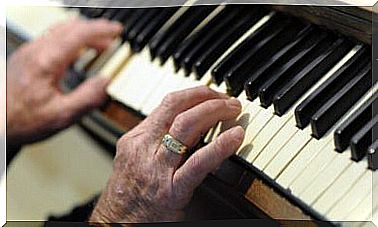Beyond Panic: Anxiety Disorders

Anxiety is a common element in many people’s lives. In some, this is controlled, in others unfortunately it ends up producing an alteration that we could include within the so-called anxiety disorders.
Thus, it can constitute the energy of the motor that leads people to carry out behaviors and tasks oriented towards action and the achievement of objectives; in others, anxiety has been triggered by irrational thoughts, attributive styles and non-functional behaviors that imply a reduction in well-being and quality of life.
Due to the prevalence of anxiety in the general population, many are aware of how it works or how it is expressed. In fact, most people could recognize an anxiety attack or generalized anxiety disorder. This, although very positive for the abandonment of stereotypes, can be misleading: there is no single type of anxiety disorder, and in fact, it is present in many other conditions.
This article explains which are the different disorders included in the group of “anxiety disorders”, collected in the DSM-5.

Separation Anxiety Disorder: It Doesn’t Just Affect Kids
Separation anxiety disorder is a condition included within the anxiety disorders that many only attribute to children. Not only they can feel separation anxiety, and there are different diagnostic criteria, depending on whether you are an adult or a child.
In the case of adults, this fear, anxiety or avoidance must have been present for 6 months to be able to diagnose this disorder; in the case of children and adolescents, as little as 4 weeks.
Separation anxiety disorder refers to a very intense and persistent fear of separating from a person with whom you have a very close bond. This separation anxiety usually manifests itself clinically in irrational moods, behaviors or cognitions that usually cause a lot of discomfort in the person who suffers them.
This can avoid going to places alone, without the person with the link; having obsessive and recurring thoughts about the separation itself and physical symptoms of the possible separation (or, quite characteristically, the anticipation of the separation ).
In the case of children and adolescents, the operation is the same, although children can somatize their anxiety through nightmares, night fears or somatic symptoms. It is very common that, before a possible separation, the child feels nauseous, has a stomach ache …
Specific phobia: the most focused anxiety
We all know a person with a phobia of spiders or airplanes. In some cases, people use the expression “having a phobia of” as a synonym for fear or disgust, although this is not entirely the case. A phobia, understood as an anxiety disorder, involves intense and persistent anxiety about the phobic element.
Anxiety is immediate and invariable, it always appears. Phobic elements are sometimes endured with great discomfort and anguish, but other times they are avoided. Phobias, therefore, work from a clear anxiety-avoidance-anxiety mechanism .
When the phobias are towards a spider or a dog, the person is able to manage their daily lives in a normal way. It is not a great impediment to have a phobia of spiders. However, there are people who can develop a phobia of elements such as airplanes, cars, the subway, the very action of swallowing something, falling asleep … These phobic elements are more problematic since they hinder people’s daily lives.
Social anxiety disorder: social phobia
Social anxiety disorder includes a phobia that involves very marked cognitive elements: social phobia. In it, the person feels intense anguish and terror at – or anticipation of – a social situation. In this social situation, the person with social phobia is afraid of submitting to the examination of others, and that they are negatively valued and / or not accepted.
Fearing rejection, people with social phobia often avoid such situations. This causes them not to expose themselves to that anxiety, but it can also cause the density or quality of the circle of support ( isolation) to suffer. This disorder should not be confused with the phobia of public speaking, since this is specific in that situation and not in other social situations.
Agoraphobia: when living is distressing
Agoraphobia is a very characteristic condition within anxiety disorders. People with agoraphobia feel a very intense fear of situations that are not within a safe zone.
They can appear on buses, on a little or very busy street, on the way home, in closed places … There are people with agoraphobia who are not afraid, for example, of a specific bus, since that is the one they usually use and it is included in your comfort zone.
Avoidance is also part of the strategies that people with agoraphobia apply to avoid feeling that anxiety and fear: they stop going by bus, they stop going to the city center … People avoid those places because of the terror of not being able to flee if necessary, because of the fear of not receiving help in the event that symptoms appear (such as an anxiety attack or panic), of suffering or that something will happen to them or harm them.

Generalized anxiety disorder: when thinking is distressing
Generalized anxiety disorder is the best known of the anxiety disorders. In this case, people with generalized AT feel excessive anxiety and worry about various events that cause physiological over-activation.
Generalized anxiety is clinically significant anxiety that prevents the person from carrying out their daily lives in a normal way. Anxiety paralyzes them, avoidance drowns them and irrational thoughts do not stop accumulating, making it increasingly difficult to function “normal” in social, family and work areas.
The anxiety disorders discussed above are not the only ones that exist. Others appear in DSM-5, such as selective mutism, panic disorder — formerly panic disorder — or anxiety disorders induced by substances, medication, or a general medical condition. It is useful to know the different types of anxiety disorders that exist because not every anxiety reaction is a panic attack, and anxiety in general can be concretized when the clinical discomfort requires it.
The treatment or approach of a person with, for example, social phobia will be very different from that of a person with separation disorder. The global label “anxiety” can make differential diagnosis difficult and misleading, so the breakdown of anxiety disorders becomes useful; not only for clinical practice, but also in the approach of the latter to other people who do not have to have notions of psychology.









